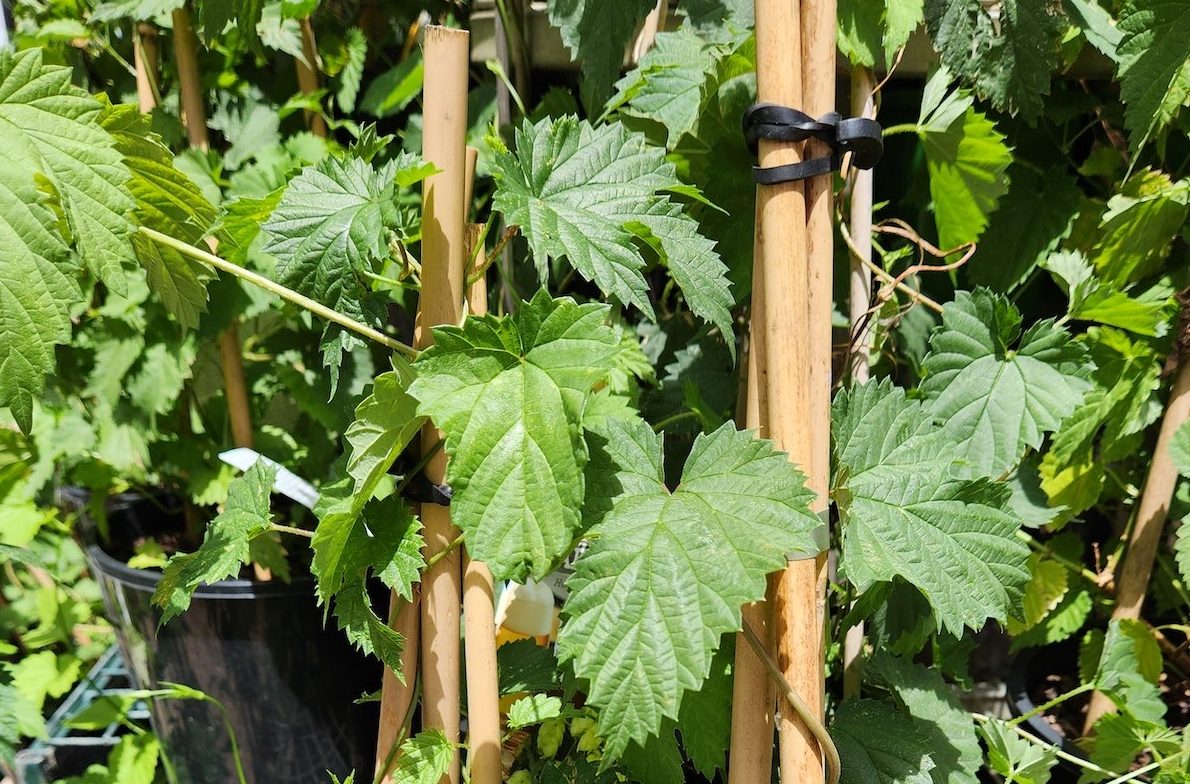Growing hops in our climate is possible due to the number of chill hours that are needed and their uses in the garden are plentiful, writes columnist JACKIE WARBURTON.
HOPS (Humulus lupulus) are technically a bine and not a vine. A bine raps its stem around its support and a vine has tendrils or suckers to climb.

The support, trellis or arbour necessarily needs to be strong to support the fast growth – an astonishing 30 centimetres a day. The total annual growth is a phenomenal six to nine metres in a season.
It makes a terrific annual screen as it grows vertically and horizontally over a frame.
Its foliage is fragrant while it is young and keeps its aroma while growing. Different varieties have different aromas from fruit and spicy to lemongrass and pine. Hops have a vigorous root system and growing in pots can be tricky as they need root room to grow.
Hops are long lived plants and are said to live up to 25 years if grown in the right spot.
Planting hops at least a metre apart with six hours of full sun will allow the horizontal branches to gain sunlight and provide good airflow.
Hops like a rich soil with a pH of about 6-7. Rhizomes are best planted in spring when the soil has warmed up and with their fast growth, they need lots of water to begin with to grow well.
In the first year they need to strengthen their roots, so keep them trimmed to about a metre tall. From the second year they will grow to have good root structure to carry future growth.
The flowers are called seed cones, or strobiles, and are primarily used to add bitter flavour to beer. Young shoots and leaves are more palatable than older leaves and can be stir fried or used to make soap.
Hops are wind pollinated, so if you want flowers then they will pollinate better if planted in groups and not in rows.
Prune to the ground in winter when the frost has damaged the foliage and cover thickly with mulch, water and fertilise in spring when there is new growth.

WINTER foliage in the garden is very visual this time of the year. Strappy plants have been in vogue for quite a few years and help to fill voids in the garden with evergreen colour. Once established, there’s very little care needed.
Phormiums are a good choice. They respond well to growing in large pots on a balcony or a statement piece in an urn. Phormiums don’t have stems and the new growth comes from the base of the plant.
When the plant gets too big, division can be done by breaking apart the distinct fan arrangements at the base of the plant with a sharp spade.
Remove any torn or damaged leaves and cut all the good leaves in the fan of rhizomes in half. This is the same trick for iris transplanting.
Add compost, water in well and fertilise with an organic pellet fertiliser.
Phormiums are native to NZ and grow in just about any type of soil. They like water and don’t mind wet feet, but once established can cope well with dry conditions.
They like full sun or part shade, but with our cold winters a little protection from the winds will prevent the leaves from tearing.
“Cream Delight” (Phormium cookianum) is a terrific new variety that grows one metre by one metre, is evergreen, architecturally beautiful and grows without too much damage to the leaves.
They are shallow-rooted plants and terrific for erosion control, embankments and slopes. The variety of foliage colours is extensive from purples to greens and sizes as well. When grown well, they’ll send up spectacular metre-high flower spikes.
Jottings
- Sow punnets of tomatoes, beetroot, carrots and celery.
- Sow onions while the soil is still cold.
- Fertilise roses with organic rose food.
- Feed flowering bulbs while they are growing.
Related
Who can be trusted?
In a world of spin and confusion, there’s never been a more important time to support independent journalism in Canberra.
If you trust our work online and want to enforce the power of independent voices, I invite you to make a small contribution.
Every dollar of support is invested back into our journalism to help keep citynews.com.au strong and free.
Thank you,
Ian Meikle, editor





